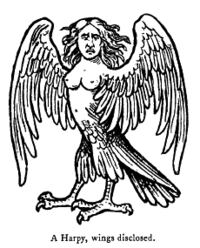M –MERMAIDS, MEDUSA, MINOTAUR, MOTHMAN
A mermaid can be found in many different myths and fables. They are creatures with a female head (normally) and torso, ending with the tail of a fish.
Mermaid can be broken down to mere, Old English for “sea”, and maid, woman. A male would be called a merman.
They are known to sing and enchant people resulting in sometimes-disastrous consequences. Other tales give reports of mermaids carrying humans down the their underwater kingdoms. They have been depicted as beautiful and loving, or beast-like and deadly. The Greek sirens have been portrayed as mermaid-like.
The first known stories are from Assyria around 1,000 B.C. The goddess Atargatis accidentally killed a human shepherd whom she was in love with. To punish herself, she jumped into a lake with the intention of turning into a fish, however she was too beautiful for the waters to hide. This is when she took on the form of a mermaid. Early representations show her as a fish with a human head and legs, much like the Babylonian Ea.
In the Arabian “One Thousand and One Nights” there are many tales of mermaids. Their versions of mermaids look like a normal human, but are able to live and breathe underwater. They are also able to breed with humans. The offspring resulting from the unions can also live underwater.
In British folklore, mermaids were considered unlucky.
Mermen were typically not as good looking as their female counterparts, and showed little interest in humans.
Scottish mythology had a mermaid called the ceasg. This means “maid of the wave”.
Ancient tales from China put a different spin on the mermaid. She was able to shed tears, which would turn into pearls.
*********
Medusa, a Gorgon, was the daughter of Phorcys and Ceto. She was able to turn humans into stone if they looked into her eyes and had snakes for hair. Perseus beheaded her, and used her head as a weapon. Eventually he gave it to the goddess Athena to put onto her shield.
Later the Roman poet Ovid told of Medusa being a beautiful woman, but when she coupled with Poseidon in Athena’s temple, Athena turned her hair to serpents and her face so horrible that to look at it would turn one to stone.
*********
The Minotaur has the head of a bull and the body of a man.
The story of the Minotaur is as follows: Minos struggled with his brothers in order to gain the right to rule. He prayed to Poseidon to send him a white bull as a positive sign. He was supposed to sacrifice the bull to honor Poseidon, but he decided to keep it for its beauty. For punishment, Aphrodite made Minos’ wife, Pasiphae, fall in love with the Cretan Bull, the bull from the sea. Daedalus was ordered to make a hollow wooden cow in which Pasiphae climbed into to in order to sleep with the white bull. Their offspring was the Minotaur. Because he was an unnatural combination of man and beast, he had no natural source of food, so he turned to man for sustenance. Minos received advice from the Oracle at Delphi to have Daedalus construct a labyrinth to hold it.
*********
Mothman is a cryptid that is rumored to live around the Point Pleasant area of West Virginia. Sightings were reported from November 12, 1966, to December in 1967. The creature is 7 foot tall with large, glowing, red eyes and wings.
November 15, 1966, Roger and Linda Scarberry, and Steve and Mary Mallette, and Lonnie Button were all in the Scarberry’s car late at night. They witnessed the creature near Point Pleasant and described it as above. Driving away, the Mothman was said to have chased them going over 100 miles per hour. The kids drove to the local police station where a Deputy left to look for it. There was no trace of it.
The next night there was another sighting of the creature, and on November 24, several people reported a sighting with the creature flying over the original area. November 25 had the creature standing in a field, and flying away. This was also reported to the police.
On January 11, 1967, the Mothman was reported to be hovering over the town’s bridge, and was seen several other times that year. The bridge, the Silver Bridge, collapsed on December 15, 1967, and the Mothman was never seen in Point Pleasant after. Some speculate that the Mothman before disasters to warn others.
Every year on the 3rd weekend in September in Point Pleasant, West Virginia, the Mothman Festival is held, featuring guest speakers, vendor exhibits, and hayride tours of the sighting areas.
All of the above information and photos were found at Wikipedia.












































